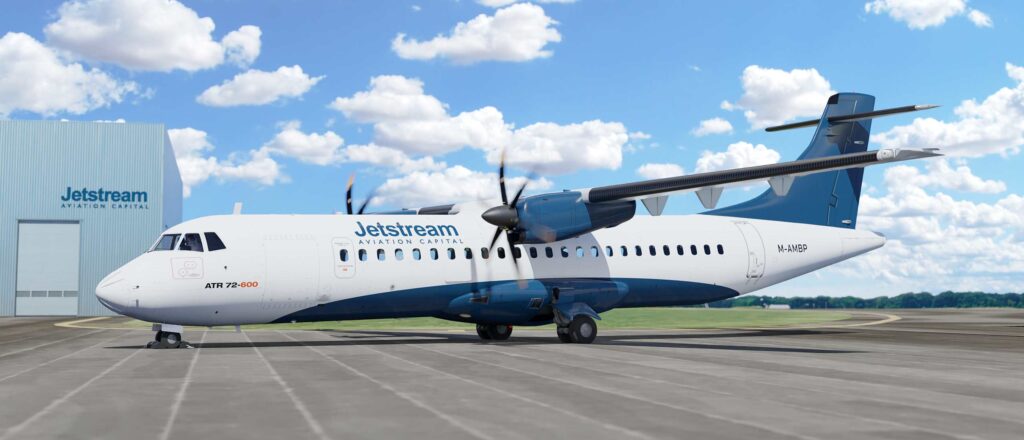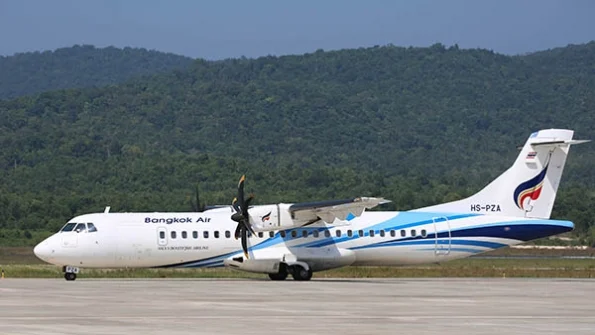Regional aircraft such as ATR vs Dash 8 are a common debate among airlines. Know everything about the price, safety, and passenger comfort in regional aircraft.
In this ultimate guide, you’ll get to know about,
- What is the safety and reliability of the ATR series and Dash 8?
- Which is more cost-efficient and affordable?
- What is the design and comfortability of ATR and Dash8?
- Pros and Cons of both Regional Aircrafts.
So, let’s get started with the in-depth overview of ATR and Dash 8.

Overview: ATR vs Dash 8
The ATR ( Aerei da Transporto Regionale) is a result of the joint venture. So, in 1984, France and Italy aerospace companies made a joint venture to give the modern ATR series to the world. The most famous models are ATR 42 and its advanced model, ATR 72.
Following Airlines use the ATR aircraft.
- Wings Air
- IndiGo
- Azul Linhas Aereas
- Air New Zealand
In contrast, the Dash 8 is a series that consists of twin-turboprop aircraft. Thus, the Dash 8 series introduced four planes that are the Dash 8 100, 200, 300, and 400 series.
Moreover, the Q series was launched by De Havilland Canada after 1997.
The most advanced plane of the Dash 8 version is the Dash8 Q400. This plane has more power and a special noise control system for quieter flights.
Following Airlines use the Dash 8 series for regional flight services.
- WestJet Encore
- Jazz Aviation
- PAL Express
- Winderoe
In ATR vs Dash 8, the capacity and technology of the latter are much more advanced than that of the Dash 8.
Key Differences: ATR vs Dash 8
1. Safety and Reliability: Which is more safer?
The safety records of both aircraft are different. Dash 8 has a cleaner and safer record than that of the ATR. Let’s have a look at the safety record of both Airlines;
The ATR 42 and ATR 72 had faced 40 flight incidents. Moreover, the incidents happened more often in severe weather conditions. One of the major crashes of ATR happened in 2015, and it was as known as TransAsia Airways Flight 235.
Thus, ATRs have upgraded their technology for safer flights.
In contrast, the Dash 8 series has also faced some minor incidents in the past. Thus, a very serious gear malfunctioning incident occurred in 2007. However, no person was harmed during the incident.
Moreover, the Q in Q400 means quiet because of the noise control system that ensures full comfort to the passengers.
2. Cost Efficiency: ATR vs Dash 8 Price
The price of aircraft is different for each model. For example, the age, condition, and features of the plane can change the price of the plane.
The prices of different ATR models are below.
- New ATR 42-500 is $12.1 million.
- The ATR 42 model used costs $9.74 million.
- Used ATR 42-300 costs around $3 million.
On the other hand, the
| Aircraft | ATR 72-600 | Dash 8 Q400 |
| Passenger Capacity | 68-78 passengers | 74-90 passengers |
| Range | 1,528 km (825 nautical miles) | 2,500 km (1,350 nautical miles) |
| Cruising Speed | 510 km/h (317 mph) | 667 km/h (414 mph) |
| Takeoff Distance | 1,200 m (3,937 ft) | 1,402 m (4,600 ft) |
| Fuel Efficiency | More fuel-efficient for short distances | Slightly higher fuel consumption |
| Price (New) | Approx. $26 million | Approx. $32 million |
series is more expensive than that of the ATR models. Thus, the recent price of the Dash 8 Q400 is 32.2 million. The reason for the high price is the advanced tech system and more passenger capacity.
However, the used Dash 8-300 is affordable at $3.25 Million.
Budget-conscious airline owners can select old or used models of the Atr and Dash 8 planes.
3. Passenger Comfort: ATR vs Dash 8 Cabin Design
The ATR has a more compact cabin. So, there is a special arrangement of 2-2 seating.
In contrast, the Dash 8 Q400 offers a more spacious cabin. Also, Noise levels are generally better managed in the Dash 8 due to its noise suppression system. Thus, airlines that prefer the passenger’s comfort choose the latest Dash 8 Q400.
4. Operational Efficiency: Which Performs Better?
ATR series, such as ATR 72-600, has the capability of STOL. Thus, the airlines that provide services in remote areas prefer ATR. Because it works best for shorter routes, it also has a lower speed, so they are better for shorter routes.
In contrast, The Dash 8 Q400 has higher speeds, which allows it to cover longer distances. Also, due to fuel efficiency, it is more useful for longer routes.
Let’s compare the specifications of both airlines.
| Aircraft | ATR 72-600 | Dash 8 Q400 |
| Passenger Capacity | 68-78 passengers | 74-90 passengers |
| Range | 1,528 km (825 nautical miles) | 2,500 km (1,350 nautical miles) |
| Cruising Speed | 510 km/h (317 mph) | 667 km/h (414 mph) |
| Takeoff Distance | 1,200 m (3,937 ft) | 1,402 m (4,600 ft) |
| Fuel Efficiency | More fuel-efficient for short distances | Slightly higher fuel consumption |
| Price (New) | Approx. $26 million | Approx. $32 million |
Pros and Cons: ATR vs Dash 8
Pros of ATR
- More fuel-efficient for short routes
- Lower initial cost
- STOL (Short takeoff and landing) capabilities
Cons of ATR
- Smaller cabins
- Lower speed than Dash 8
Pros of Dash 8
- Higher speed
- Better for long regional routes
- Larger passenger capacity
- Advanced noise suppression system
Cons of Dash 8
- Higher cost
- Slightly less fuel-efficient
Final Verdict: ATR vs Dash 8
The ATR vs Dash 8 is not a battle once the Airline knows its needs. If the airline is prioritizing fuel efficiency, lower operational costs, and short regional hops, the ATR is a better choice. But the airlines that need higher speed, and larger capacity on longer routes, the Dash 8 Q400 is a good option. Both aircraft offer their own unique benefits, making them excellent choices for regional airlines globally.


FAQs
1. What is the price of ATR and Dash 8?
The ATR 72-600 is priced around $26 million, while the Dash 8 Q400 costs about $32 million.
2. Which aircraft has better fuel efficiency ATR or Dash 8?
The ATR 72-600 is generally more fuel-efficient, particularly on shorter regional routes.
3. What is the seating capacity of the Dash 8 Q400?
The Dash 8 Q400 can seat between 74 to 90 passengers, depending on the configuration.

